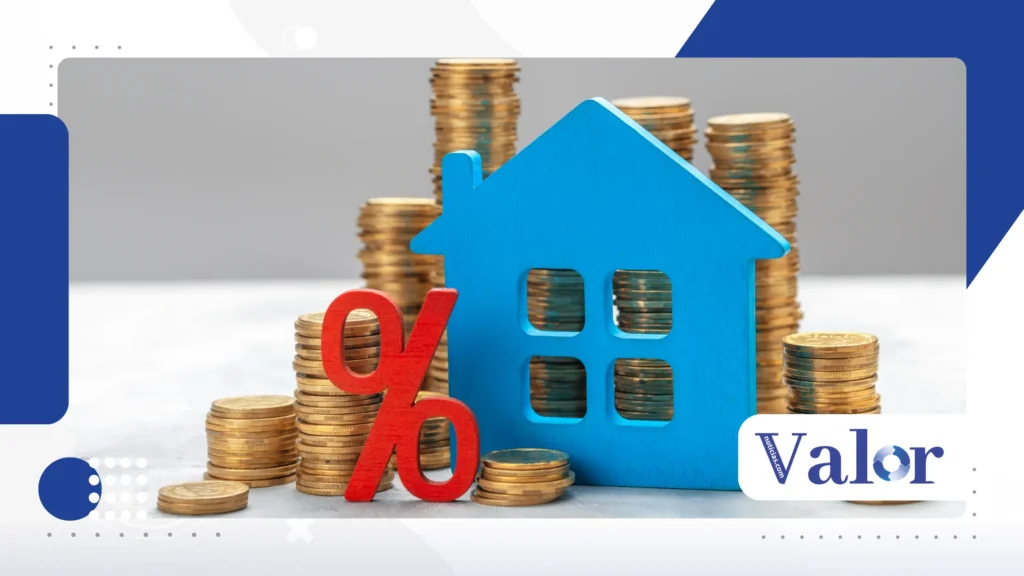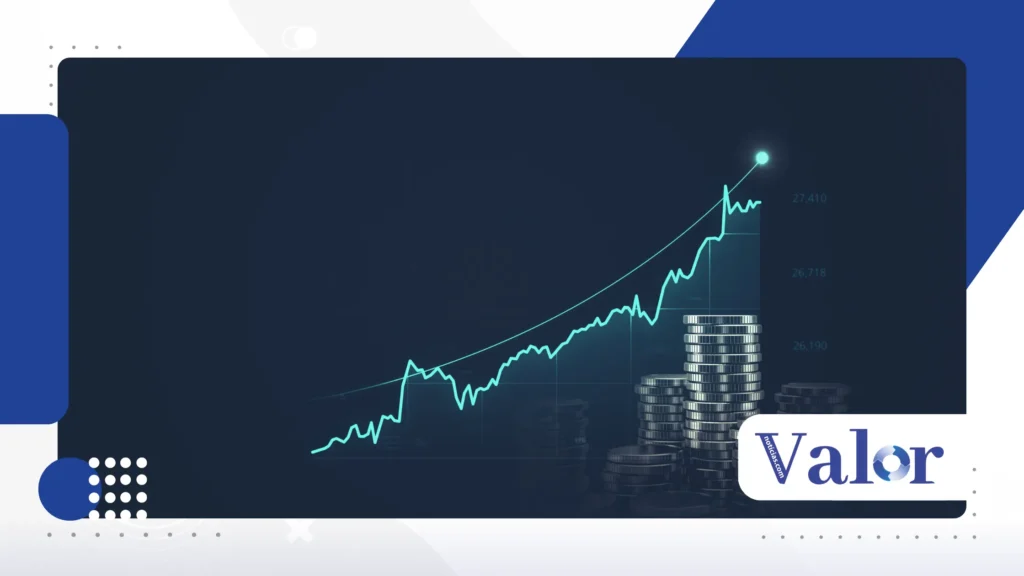Is It Worth Taking Out a Loan to Invest? The Answer Isn't So Simple

What does money mean to you? Freedom, security, prosperity?
Advertisements
The quest to fulfill dreams and achieve financial independence leads many to question whether it is worth doing so. loan to invest.
But the answer, as with almost everything in life, is not so simple.
Summary
- Loan to Invest: The Temptation to Accelerate Growth
- The Risk Dilemma: Financial Leverage and its Consequences
- Analyzing the Scenarios: When a Loan to Invest It makes sense
- Success Strategies: What to Consider Before Deciding
- The Importance of Planning and Knowledge
- Practical Examples and Market Reality in 2025
- Conclusion: Loan, Investment and the Personal Decision
The Temptation to Accelerate Growth
Many dream of accelerating their journey to financial freedom, and the idea of a loan to invest may seem like a seductive shortcut.
After all, if you can take cheap money and invest it in something that yields much more, why not? The logic seems impeccable.
However, the reality of the financial market is a complex dance of risks and rewards, where recklessness can lead to precipitous falls.
This approach, known as leverage, involves using third-party capital to amplify the potential return on an investment.
It has been a common strategy among experienced investors, but for the average investor, the scenario is riskier.
Leverage can be a powerful engine of growth, but it can also be a dangerous fuel for debt.
When investments perform well, profits multiply, driven by borrowed capital.
On the other hand, in an unfavorable scenario, losses are amplified, and you still have debt to pay.
The temptation for accelerated growth is great, but caution is the watchword. It's the fine line between opportunity and recklessness.
+ Why your credit may be denied even with a high score
The Risk Dilemma: Financial Leverage and its Consequences
The main danger of using a loan to invest is in financial leverage, which can be compared to a tightrope.
Leverage is a powerful tool that can either lift you up or tear you down.
When you take out a loan, you are betting that your return on investment will exceed the interest and costs of the loan.
If this bet pays off, the payouts are significant, as you will pay the interest and pocket the remaining profit.
If the bet goes wrong, and your investment doesn't yield what you expected or, even worse, loses value, the loss is doubled.
Not only do you lose the money you invested, but you will also have to pay the loan installments.
It's the difference between multiplying profits and multiplying losses, making the scenario much more complex and risky.
+ Payroll Loan: Which Bank Is Really Worth It?
Analyzing the Scenarios: When a Loan to Invest It makes sense

There are situations where using borrowed capital to invest can be a smart and calculated strategy.
If you have in-depth market knowledge, a well-defined risk tolerance, and access to low-interest loans, it might be worth it.
The key is to ensure that the expected return on your investment is substantially higher than the actual cost of the loan.
For example, a loan with annual interest of 12% for an investment that historically yields 20% per year may seem like a good bet.
However, it is crucial to remember that past returns do not guarantee future returns, and market volatility is a constant.
The decision to take a loan to invest must always be based on rigorous and conservative analysis.
It's essential to have a robust emergency fund to cover loan payments if the investment doesn't go as planned.
+ How Does the Electricity Bill Loan Work?
Success Strategies: What to Consider Before Deciding
Before deciding whether an investment loan is the best option, it's crucial to consider a few key factors.
First, assess your financial situation. Do you have other debts? Is your income stable? What is your payment capacity?
The second step is to analyze the credit market. The Selic rate, currently (in 2025) at 10.75%, directly influences the cost of money.
Personal loans and financing are affected by this rate, so you need to get a lower rate for the investment to be worthwhile.
Another point is your experience as an investor. Are you aware of the risks of the asset you plan to purchase?
What's your risk tolerance? Would you be willing to lose your investment and still have to pay off your debt?
Being clear about these points is the first step to making a responsible and informed decision, minimizing risks.
The Importance of Planning and Knowledge
There are no shortcuts to financial success, just planning and knowledge. The decision to make a loan to invest must be the conclusion of a process.
This process begins with the financial education. Understand how compound interest, inflation, and different types of investments work.
Next, you need to define your goals. Do you want to buy a property to rent out? Invest in shares of a promising company?
With clear objectives, you can create an action plan, which includes in-depth research into the assets you intend to invest in.
An unprepared investor is like a sailor without a compass, at the mercy of market storms.
Lack of knowledge can lead to impulsive and emotionally driven decisions, which almost always result in losses.
In 2025, the financial market is increasingly accessible and democratic, but also more complex and full of information.
Practical Examples and Market Reality in 2025
To illustrate this reality, let us consider two hypothetical examples. The first is that of a person who uses a loan to invest in volatile stocks.
João, a technology enthusiast, borrowed R$50,000 at a rate of R$51,000 per year to invest in a gaming startup.
Within six months, the company went bankrupt. João not only lost his investment but was left with a debt of R$1,400,000 plus interest.
The second example is someone who uses a loan cautiously. Maria, a real estate analyst, identified an opportunity in her city.
She took out a loan of R$ 300 thousand, with interest of 10% per year, to buy an apartment worth R$ 400 thousand.
The market value of the property grew to R$450,000, and the apartment still provided him with a monthly rent that covered the loan and costs.
The difference between John and Mary was not luck, but planning and market knowledge.
A Serasa survey in 2024 revealed that 48% of Brazilians used credit for investment or entrepreneurship purposes.
And the loan most used by these investors is the payroll loan, due to the lower interest rates.
The analogy that best fits this scenario is using fire: it can heat your home and cook your food.
However, if used recklessly, it can burn everything you have.
See the table below, which details the most common types of investment loans and their characteristics:
Table
| Loan Type | Annual Interest Rate (Average) | Application Example |
| Payroll Loan | 20% – 30% | Investment in fixed income funds |
| Personal Loan | 50% – 150% | Working capital for small businesses |
| Real Estate Financing | 10% – 15% | Purchase of property for rent |
| Vehicle Financing | 15% – 25% | Purchase of vehicle for app driver |
Source: Central Bank of Brazil, average data for the first half of 2025.
The table illustrates the variety of options and the importance of choosing the one that best suits your financial situation.
Each type of loan has its own rules and fees, which reinforces the need for a thorough analysis.
Conclusion: Loan, Investment and the Personal Decision
Ultimately, the decision to make a loan to invest is deeply personal and depends on your individual situation.
It's not a recipe, and what works for one person may be the downfall of another. There's no single or guaranteed path to success.
It's a decision that requires honesty with yourself about your risk tolerance and your ability to deal with the consequences.
The question is not whether it is possible, but whether it is the best and safest option for you and your life goals.
Is seeking a shortcut worth the risk of compromising your financial future? Consider this.
To deepen your knowledge on the topic, read more about the risks and benefits of financial leverage on the website. Securities and Exchange Commission (CVM).
